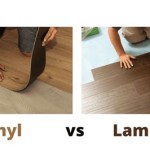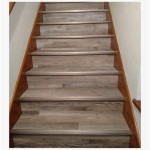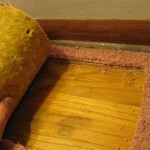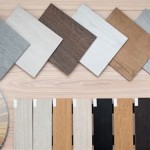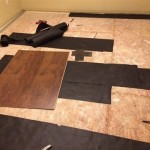Can You Put Tile On A Cement Floor?
The prospect of installing tile over a cement floor is a common consideration for homeowners, renovators, and construction professionals alike. Cement floors, also known as concrete slabs, offer a stable and durable substrate for various flooring materials. Tile, known for its aesthetic appeal, durability, and resistance to water and stains, presents a desirable flooring option. However, the successful installation of tile over cement requires meticulous planning, preparation, and execution. This article will delve into the intricacies of the process, addressing crucial factors that determine its feasibility and outlining best practices for achieving a long-lasting and visually appealing result.
The compatibility of tile with a cement floor is generally favorable, provided certain conditions are met. Cement provides a rigid and solid base, which is essential for preventing tile cracking and movement. The inherent weight of tile also benefits from the compressive strength of concrete. However, imperfections in the cement slab can compromise the integrity of the tile installation. Therefore, a thorough assessment of the cement floor is the initial and most crucial step in the process.
Assessing the Cement Floor's Condition
Before commencing any tile installation, the cement floor must undergo a comprehensive inspection to identify potential issues. This assessment should include evaluating the floor for cracks, unevenness, moisture content, and the presence of contaminants. Each of these factors can significantly impact the adhesion and longevity of the tile installation.
Cracks: Cracks in the cement floor can range from hairline fractures to significant structural cracks. Hairline cracks, often caused by shrinkage during the curing process, may be manageable. However, larger cracks, particularly those that exhibit movement or displacement, indicate underlying structural problems. These issues must be addressed before tiling, as they can propagate through the tile and cause cracking. Filling cracks with a patching compound is a common practice, but for structural cracks, professional assessment and repair are necessary.
Unevenness: A perfectly level cement floor is rare. Minor irregularities are acceptable, but significant unevenness can create challenges during tile installation. Unevenness can lead to lippage, where one tile sits higher than its adjacent tiles, creating an unsightly and potentially hazardous surface. The use of a self-leveling compound is often employed to create a smooth and level surface before tiling. These compounds are designed to flow and settle, filling in low spots and leveling out the floor.
Moisture Content: Excessive moisture within the cement slab is a major concern. Moisture can interfere with the adhesion of the tile adhesive (mortar) and lead to mold growth and tile debonding. A moisture test is essential to determine the moisture vapor emission rate (MVER) of the concrete. This test typically involves using a calcium chloride test kit or an electronic moisture meter. The MVER should be within the limits specified by the tile adhesive manufacturer. If the moisture content is too high, a moisture mitigation system, such as a vapor barrier membrane, may be required.
Contaminants: The presence of paint, sealers, adhesives, oil, grease, or other contaminants on the cement floor can hinder the bonding of the tile adhesive. These contaminants must be removed thoroughly before tiling. Mechanical methods, such as grinding or scraping, may be necessary to remove stubborn residues. Chemical strippers can also be used, but it is crucial to ensure that all traces of the stripper are removed before applying the tile adhesive.
Following the assessment, any necessary repairs or remediation should be undertaken to ensure a sound and stable substrate for the tile installation.
Preparing the Cement Floor for Tiling
Once the cement floor has been assessed and any necessary repairs have been made, the next step is to prepare the surface for tiling. This preparation involves cleaning, profiling (roughening), and applying a primer.
Cleaning: Thorough cleaning is essential to remove any remaining dust, debris, or loose particles. Sweeping, vacuuming, and scrubbing the floor with a suitable cleaner are necessary steps. Pressure washing can be effective for outdoor or garage floors, but it is crucial to allow the floor to dry completely before proceeding.
Profiling (Roughening): Cement floors often have a smooth surface, which can hinder the mechanical bond between the tile adhesive and the concrete. Profiling, or roughening, the surface creates a better key for the adhesive. This can be achieved through various methods, including grinding, scarifying, or acid etching. Grinding is a common method that uses a diamond grinding wheel to create a slightly rough surface. Scarifying involves using a machine with rotating cutters to create deeper grooves. Acid etching involves applying a diluted acid solution to the floor, followed by thorough rinsing. The choice of method depends on the condition of the floor and the desired level of roughness.
Priming: Applying a primer to the prepared cement floor enhances the adhesion of the tile adhesive and helps to seal the surface, preventing excessive absorption of moisture from the adhesive. The primer should be compatible with both the cement floor and the tile adhesive. Follow the manufacturer's instructions for application, ensuring even coverage and allowing sufficient drying time before applying the tile adhesive.
Proper preparation of the cement floor is critical for ensuring a strong and long-lasting bond between the tile and the substrate. Skipping or neglecting these steps can lead to tile failure and costly repairs.
Selecting the Appropriate Tile and Adhesive
The choice of tile and adhesive is crucial for the success of the installation. Consider the intended use of the tiled area, the type of tile desired, and the environmental conditions to which the floor will be subjected.
Tile Selection: Different types of tiles have varying properties and are suitable for different applications. Ceramic tiles are a popular choice for their versatility, affordability, and ease of maintenance. Porcelain tiles are denser and more durable than ceramic tiles, making them suitable for high-traffic areas and outdoor applications. Natural stone tiles, such as granite, marble, and slate, offer a unique aesthetic appeal but require specialized installation and maintenance. The tile's size and shape should also be considered, as larger tiles may require more experienced installation techniques to ensure proper leveling and alignment.
Adhesive Selection: The tile adhesive, also known as mortar, is the material that bonds the tile to the cement floor. Selecting the appropriate adhesive is critical for achieving a strong and durable bond. Modified thin-set mortars are commonly used for tiling over cement floors. These mortars contain polymers that enhance their adhesion, flexibility, and water resistance. The type of modified thin-set mortar required depends on the type of tile being used, the size of the tile, and the environmental conditions. For example, larger tiles require a mortar with higher bond strength and reduced shrinkage. For wet areas, such as bathrooms and showers, a waterproof or water-resistant mortar is essential.
It is imperative to consult the tile and adhesive manufacturers' recommendations to ensure compatibility between the materials and the specific application. Using the wrong adhesive can lead to tile failure and costly repairs.
The installation process itself involves carefully applying the adhesive to the prepared cement floor using a notched trowel, placing the tiles according to a pre-planned layout, and ensuring proper leveling and alignment. Grouting, the process of filling the spaces between the tiles with grout, is the final step that completes the installation and provides a waterproof seal.
In summary, installing tile over a cement floor is a feasible and often desirable option. Success hinges on a thorough assessment of the cement floor's condition, meticulous preparation of the surface, and the selection of appropriate tile and adhesive materials. Following best practices and adhering to manufacturer's recommendations will result in a durable, aesthetically pleasing, and long-lasting tiled floor.
How To Install Tiles On Concrete Floors Stonesuper
How To Tile Onto Concrete Floors Porcelain Super
:max_bytes(150000):strip_icc()/can-you-install-tile-directly-on-concrete-1822600-04-458f7bb6c78348c1835cf8054ef36553.jpg?strip=all)
How To Install Tile Over Concrete

Tiling Over A Ed Concrete Slab Fine Homebuilding

How To Lay A Tile Floor On Concrete Diy Homeimprovement

How To Lay Floor Tiles On Concrete Welcome The Rubi Tools Blog

How To Lay Tile On Concrete With S Wikihow

How To Install Ceramic Tiles On Concrete Floor Tile Installation

How To Install Ceramic Tiles On Concrete Floor Tile Installation

Concrete Basement Floor Tiling Preparation
See Also


